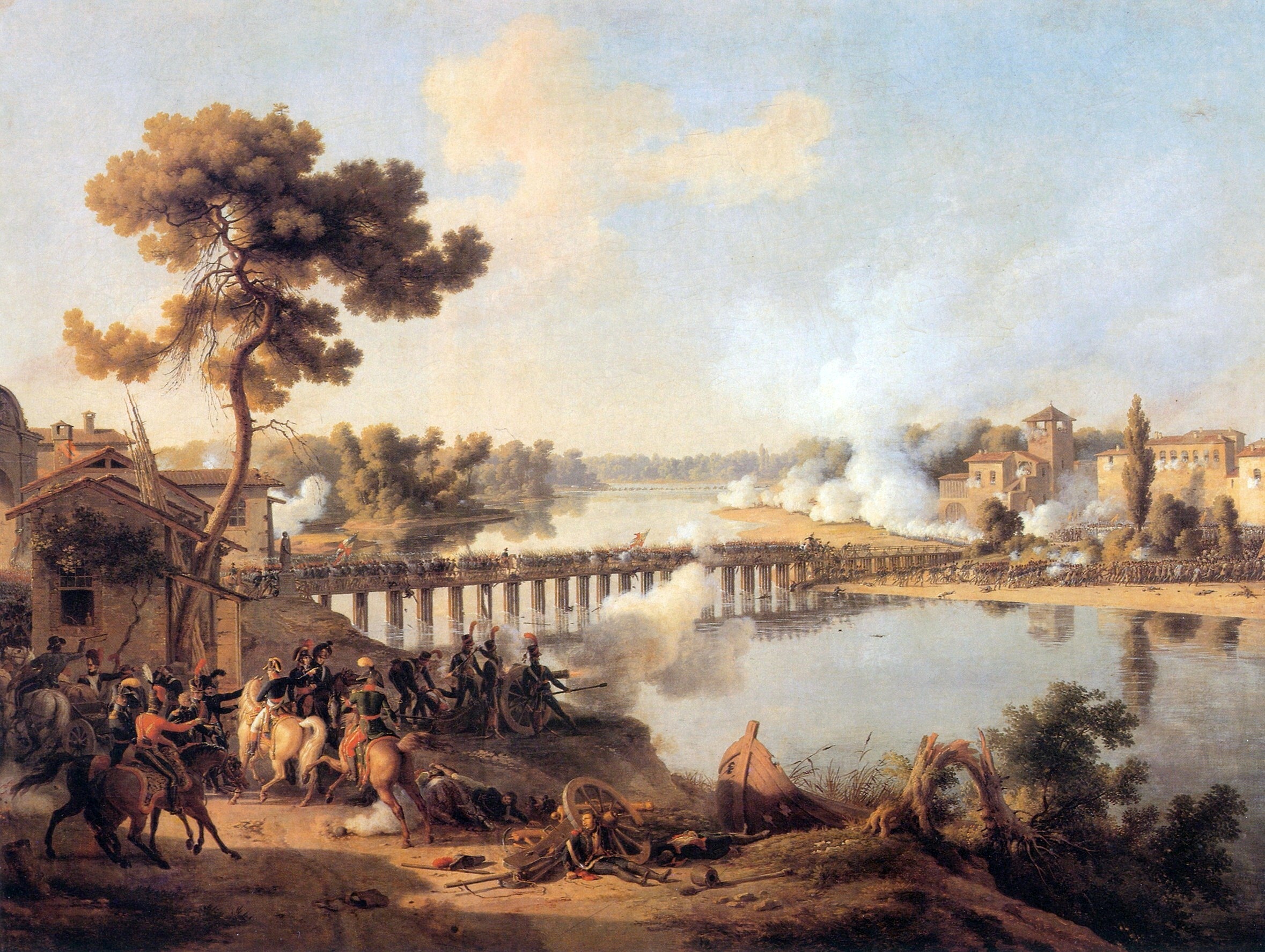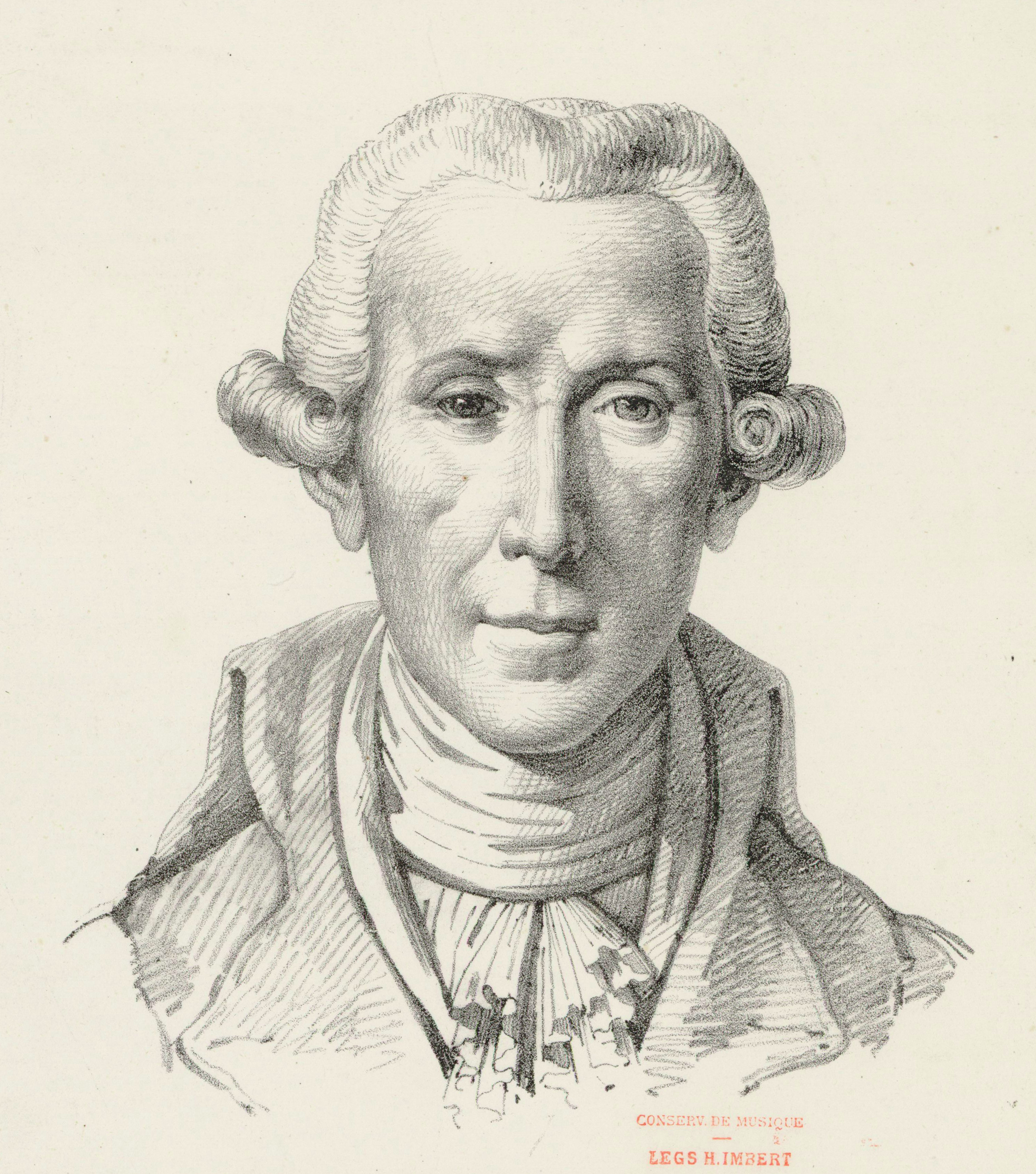|
String Quartet No. 1 (Mozart)
Wolfgang Amadeus Mozart's String Quartet No. 1 in G major, K. 80/73f, was completed in its original three-movement form on 15 March 1770 while touring in Lodi, Lombardy. Mozart was 14 at the time. The fourth movement was added later, possibly in 1773, when Mozart and his father visited Vienna. There is a theory surrounding who this piece is in the style of, and many say the Italian cellist and composer Luigi Boccherini was the primary influence for this string quartet. by Mark A. Radice, p. 42 Movements In contrast to the Milanese Quartets, this quartet is in four- |
Wolfgang Amadeus Mozart
Wolfgang Amadeus Mozart (27 January 17565 December 1791), baptised as Joannes Chrysostomus Wolfgangus Theophilus Mozart, was a prolific and influential composer of the Classical period. Despite his short life, his rapid pace of composition resulted in more than 800 works of virtually every genre of his time. Many of these compositions are acknowledged as pinnacles of the symphonic, concertante, chamber, operatic, and choral repertoire. Mozart is widely regarded as among the greatest composers in the history of Western music, with his music admired for its "melodic beauty, its formal elegance and its richness of harmony and texture". Born in Salzburg, in the Holy Roman Empire, Mozart showed prodigious ability from his earliest childhood. Already competent on keyboard and violin, he composed from the age of five and performed before European royalty. His father took him on a grand tour of Europe and then three trips to Italy. At 17, he was a musician at the Salzburg court ... [...More Info...] [...Related Items...] OR: [Wikipedia] [Google] [Baidu] |
1770 In Music
Events * The " Concert des Amateurs" is founded by François-Joseph Gossec. * Ballet is performed the first time in Oslo by Madame Stuart. *''Musikalisches Vielerley'' is published; a collection of pieces from various composers, edited by CPE Bach. (Hamburg: Michael Christian Bock) Classical music *Carl Philipp Emanuel Bach – Fantasia in D minor, H.224 *Johann Christian Bach **6 Keyboard Concertos, Op. 7 **6 Quartets, Op. 8 *Luigi Boccherini – Cello Concerto in D major, G.479 *Joseph Haydn – Baryton Trio in A major, Hob.XI:2 *Gabriele Leone – Six sonatas for mandolin and bass marked with signs according to the new method, Op. 2 *Wolfgang Amadeus Mozart – Symphony 11 *Pietro Nardini – Sonatas for 2 Flutes/Violins and Basso Continuo Methods and theory writings * Johann Caspar Heck – ''The Art of Playing the Harpsichord'' * John Holden – ''An Essay Towards a Rational System of Music'' Operas Christoph Willibald Gluck – ''Paride ed Elena'', Wq.39 Publi ... [...More Info...] [...Related Items...] OR: [Wikipedia] [Google] [Baidu] |
Lodi, Lombardy
Lodi ( , ; Ludesan: ) is a city and ''comune'' in Lombardy, northern Italy, primarily on the western bank of the River Adda. It is the capital of the province of Lodi. History Lodi was a Celtic village; in Roman times it was called, in Latin, Laus Pompeia (probably in honour of the consul Gnaeus Pompeius Strabo) and was known also because its position allowed many Gauls of ''Gallia Cisalpina'' to obtain Roman citizenship. It was in an important position where a vital Roman road crossed the River Adda. Lodi became the see of a diocese in the 3rd century. Saint Bassianus (San Bassiano) is the patron saint of the town. A free commune around 1000, it fiercely resisted the Milanese, who destroyed it in 1111. The old town corresponds to the modern Lodi Vecchio. Frederick Barbarossa rebuilt it on its current location in 1158. From 1220, the ''Lodigiani'' (inhabitants of Lodi) spent decades in constructing a system of miles of artificial rivers and channels (called ''Cons ... [...More Info...] [...Related Items...] OR: [Wikipedia] [Google] [Baidu] |
Lombardy
(man), (woman) lmo, lumbard, links=no (man), (woman) , population_note = , population_blank1_title = , population_blank1 = , demographics_type1 = , demographics1_footnotes = , demographics1_title1 = , demographics1_info1 = , demographics1_title2 = , demographics1_info2 = , demographics1_title3 = , demographics1_info3 = , timezone1 = CET , utc_offset1 = +1 , timezone1_DST = CEST , utc_offset1_DST = +2 , postal_code_type = , postal_code = , area_code_type = ISO 3166 code , area_code = IT-25 , blank_name_sec1 = GDP (PPS) , blank_info_sec1 = €401 billion (2019) , blank1_name_sec1 = GDP per capita , blank1_info_sec1 = €39,700 (2019) $51,666 (2016) (PPP) , blank2_name_sec1 = HDI (2019) , blank2_info_sec1 = 0.912 · 4th of 21 , blank_name_sec2 ... [...More Info...] [...Related Items...] OR: [Wikipedia] [Google] [Baidu] |
Luigi Boccherini
Ridolfo Luigi Boccherini (, also , ; 19 February 1743 – 28 May 1805) was an Italian composer and cellist of the Classical era whose music retained a courtly and '' galante'' style even while he matured somewhat apart from the major European musical centers. He is best known for a minuet from his String Quintet in E, Op. 11, No. 5 ( G 275), and the Cello Concerto in B flat major (G 482). The latter work was long known in the heavily altered version by German cellist and prolific arranger Friedrich Grützmacher, but has recently been restored to its original version. Boccherini's output also includes several guitar quintets. The final movement of the Guitar Quintet No. 4 in D (G 448) is a fandango, a lively Spanish dance. Biography Boccherini was born into a musical family in Lucca, Italy in 1743. He was the third child of Leopoldo Boccherini, a cellist and double-bass player, and the brother of Giovanni Gastone Boccherini, a poet and dancer who wrote librettos fo ... [...More Info...] [...Related Items...] OR: [Wikipedia] [Google] [Baidu] |
Milanese Quartets (Mozart)
The six string quartets, K. 155–160, were composed by Wolfgang Amadeus Mozart in late 1772 and early 1773 when Mozart was sixteen and seventeen years of age. Because they were composed in Milan while he was working on his opera Lucio Silla, they are popularly known as the Milanese Quartets. Before this set was composed, Mozart had written one earlier string quartet ( K. 80/73f in 1770), so these six quartets are ordinally numbered from No. 2 to No. 7. The quartets are written in a plan of keys of D-G-C-F-B-E following the circle of fifths. All six quartets have only three movements. Four of the quartets (K. 156-159) have middle movements in the minor mode, one of which (that of K. 159) is, unusually, not a slow movement, but a fiery sonata-allegro. The finales are generally lightweight, usually minuets or rondos.Heartz, Daniel, ''Haydn, Mozart, and the Viennese School, 1740-1780''. W.W. Norton & Company (), pp. 561–562 (1995). The sixth edition of the Köchel catalogue, pu ... [...More Info...] [...Related Items...] OR: [Wikipedia] [Google] [Baidu] |
Movement (music)
A movement is a self-contained part of a musical composition or musical form In music, ''form'' refers to the structure of a musical composition or performance. In his book, ''Worlds of Music'', Jeff Todd Titon suggests that a number of organizational elements may determine the formal structure of a piece of music, suc .... While individual or selected movements from a composition are sometimes performed separately as stand-alone pieces, a performance of the complete work requires all the movements to be performed in succession. A movement is a section, "a major structural unit perceived as the result of the coincidence of relatively large numbers of structural phenomena". Sources Formal sections in music analysis {{music-stub ... [...More Info...] [...Related Items...] OR: [Wikipedia] [Google] [Baidu] |
Tempo
In musical terminology, tempo ( Italian, 'time'; plural ''tempos'', or ''tempi'' from the Italian plural) is the speed or pace of a given piece. In classical music, tempo is typically indicated with an instruction at the start of a piece (often using conventional Italian terms) and is usually measured in beats per minute The minute is a unit of time usually equal to (the first sexagesimal fraction) of an hour, or 60 seconds. In the UTC time standard, a minute on rare occasions has 61 seconds, a consequence of leap seconds (there is a provision to insert a nega ... (or bpm). In modern classical compositions, a " metronome mark" in beats per minute may supplement or replace the normal tempo marking, while in modern genres like electronic dance music, tempo will typically simply be stated in BPM. Tempo may be separated from articulation and meter (music), meter, or these aspects may be indicated along with tempo, all contributing to the overall texture (music), texture. W ... [...More Info...] [...Related Items...] OR: [Wikipedia] [Google] [Baidu] |
Minuet
A minuet (; also spelled menuet) is a social dance of French origin for two people, usually in time. The English word was adapted from the Italian ''minuetto'' and the French ''menuet''. The term also describes the musical form that accompanies the dance, which subsequently developed more fully, often with a longer musical form called the minuet and trio, and was much used as a movement in the early classical symphony. Dance The name may refer to the short steps, ''pas menus'', taken in the dance, or else be derived from the ''branle à mener'' or ''amener'', popular group dances in early 17th-century France. The minuet was traditionally said to have descended from the ''bransle de Poitou'', though there is no evidence making a clear connection between these two dances. The earliest treatise to mention the possible connection of the name to the expression ''pas menus'' is Gottfried Taubert's ''Rechtschaffener Tantzmeister'', published in Leipzig in 1717, but this source ... [...More Info...] [...Related Items...] OR: [Wikipedia] [Google] [Baidu] |
C Major
C major (or the key of C) is a major scale based on C, consisting of the pitches C, D, E, F, G, A, and B. C major is one of the most common keys used in music. Its key signature has no flats or sharps. Its relative minor is A minor and its parallel minor is C minor. The C major scale is: : On the piano, the C major scale can be played by playing only the white keys starting on C. Compositions Twenty of Joseph Haydn's 106 symphonies are in C major, making it his second most-used key, second to D major. Of the 134 symphonies mistakenly attributed to Haydn that H. C. Robbins Landon lists in his catalog, 33 are in C major, more than any other key. Before the invention of the valves, Haydn did not write trumpet and timpani parts in his symphonies, except those in C major. Landon writes that it wasn't "until 1774 that Haydn uses trumpets and timpani in a key other than C major... and then only sparingly." Most of Haydn's symphonies in C major are labelled "festive ... [...More Info...] [...Related Items...] OR: [Wikipedia] [Google] [Baidu] |
Rondo
The rondo is an instrumental musical form introduced in the Classical period. Etymology The English word ''rondo'' comes from the Italian form of the French ''rondeau'', which means "a little round". Despite the common etymological root, rondo and rondeau as musical forms are essentially different. Rondeau is a ''vocal'' musical form that was originally developed as monophonic music (in the 13th century) and then as polyphonic music (in the 14th century). Notably, both vocal forms of rondeau nearly disappeared from the repertoire by the beginning of the 16th century. In French, ''rondeau'' is used for both forms, while in English ''rondeau'' is generally used for the ''vocal'' musical form, while ''rondo'' is used for the ''instrumental'' musical form.Don Neville, "Rondò", ''The New Grove Dictionary of Opera'', 4 vols., edited by Stanley Sadie (London: Macmillan, 1992). Form In rondo form, a principal theme (sometimes called the "refrain") alternates with one or more contras ... [...More Info...] [...Related Items...] OR: [Wikipedia] [Google] [Baidu] |




.jpg)
.png)